Typeerror A Bytes Like Object Is Required Not Str
Introduction
When working with Python, it is common to encounter different types of exceptions. One such exception is the TypeError, which occurs when an operation or function is performed on an object of an inappropriate type. In this article, we will focus on a specific TypeError exception message: “a bytes-like object is required, not str”. We will delve into the details of this exception, understand the difference between str and bytes objects, discuss when and why the TypeError occurs, explore methods and functions involving bytes-like objects, address common mistakes leading to the exception, provide best practices for handling bytes-like objects, and conclude with a summary.
Explanation of the TypeError Exception
Overview of the TypeError Exception in Python
TypeError is a built-in exception in Python that is raised when an operation or function is performed on an object of an inappropriate type. This exception indicates that the expected type of the object does not match the actual type.
Discussion on the Specific Error Message: “a bytes-like object is required, not str”
The error message “a bytes-like object is required, not str” specifically refers to situations where a bytes-like object is expected, but a str (string) object is provided instead. This occurs when a method or function expects a bytes-like object, which is a data type capable of representing a sequence of bytes, but receives a str object, which represents a sequence of Unicode characters.
Introduction to the Concept of Bytes-like Objects
A bytes-like object is a data type in Python that can represent a sequence of bytes. It is similar to a string object (str) but differs in terms of the underlying data representation. Bytes-like objects are immutable, while string objects can be mutable.
Difference Between str and bytes Objects
Explaining the Distinction Between str and bytes Objects in Python
In Python, str objects represent a sequence of Unicode characters, which can be encoded into bytes using different encodings like UTF-8, UTF-16, etc. On the other hand, bytes objects represent a sequence of raw bytes, which can be decoded into str using similar encodings. The main difference lies in the way these objects store and interpret data.
Discussion on Their Respective Characteristics and Usage
str objects are commonly used for handling text data, as they provide flexibility in terms of encoding and decoding. They support various string manipulation methods and are widely used for string processing tasks. bytes objects, on the other hand, are used for handling binary data, such as images, audio files, or network protocols. They are not meant to be directly manipulated as strings, but rather used in specific operations or passed to functions that expect bytes-like objects.
Examples of Creating and Manipulating str and bytes Objects
To create a str object, you can simply enclose the desired text within single or double quotes. For example:
“`python
my_string = “Hello, World!”
“`
To create a bytes object, you can use the `bytes` constructor, passing either a sequence of integers representing the byte values or a string encoded in a specific encoding. For example:
“`python
my_bytes = bytes([72, 101, 108, 108, 111, 44, 32, 87, 111, 114, 108, 100, 33])
“`
When and Why the TypeError Occurs
Identifying the Circumstances Under Which the “a bytes-like object is required, not str” Error Occurs
The “a bytes-like object is required, not str” error occurs when a method or function expects a bytes-like object, but a str object is provided instead. This can happen when attempting to perform operations that specifically require bytes, such as network communication, file handling, and cryptographic operations.
Explanation of the Situations in Which a bytes-like Object is Expected
In situations where a bytes-like object is expected, it is typically because the operation or function is designed to work with binary data, rather than text data. This could include tasks like reading or writing binary files, sending or receiving binary data over a network connection, or performing cryptographic operations that require bytes as input.
Examples of Incorrect Usage Resulting in the TypeError
Let’s consider a hypothetical scenario where a function expects a bytes-like object and is called with a str object instead:
“`python
def process_binary_data(data):
# Some code here
data = “Hello, World!”
process_binary_data(data)
“`
In this example, the function `process_binary_data` expects a bytes-like object, but the `data` variable is a str object. This will result in the “a bytes-like object is required, not str” TypeError.
Methods and Functions Involving bytes-like Objects
Overview of Python Methods and Functions that Require bytes-like Objects
Python provides several methods and functions that specifically require bytes-like objects for their proper functioning. These include methods for reading and writing binary files, performing cryptographic operations, and interacting with network protocols.
Detailed Explanation of the Specific Methods that Raise the TypeError Exception
Some common methods and functions that necessitate a bytes-like object are:
1. `open` function with `mode=’rb’`: This function is used for opening files in binary mode, which expects bytes-like data.
2. `socket.send` and `socket.recv` methods: These methods are used for sending and receiving binary data over a network connection.
3. Cryptographic operations in libraries like `cryptography` or `hashlib`: These libraries often require bytes-like objects as input for encryption, decryption, hashing, and other operations.
Illustration of Examples and Usage Scenarios for These Methods/Functions
Let’s consider an example where we want to read binary data from a file:
“`python
with open(“binary_data.txt”, “rb”) as file:
data = file.read()
“`
Here, we use the `open` function with the `mode=’rb’` argument to open the file in binary mode, indicating that we expect bytes-like data. The `read` method then reads the binary data from the file.
Conversion Between str and bytes Objects
Techniques for Converting str to bytes and Vice Versa
Python provides methods to convert between str and bytes objects, allowing for seamless conversion when needed. The `encode` method is used to convert a str object to bytes, while the `decode` method is used to convert bytes to str.
Explanation of the Encoding and Decoding Processes
The encoding process is the act of converting Unicode characters into bytes using a specific encoding scheme. On the other hand, decoding is the process of converting bytes back into Unicode characters.
Demonstrating the Correct Approach to Prevent the TypeError
To prevent the “a bytes-like object is required, not str” TypeError when converting between str and bytes objects, it is essential to encode or decode the objects appropriately. For example:
“`python
my_string = “Hello, World!”
my_bytes = my_string.encode(“utf-8″)
my_bytes = b”Hello, World!”
my_string = my_bytes.decode(“utf-8”)
“`
In these examples, the `encode` method is used to encode the str object to bytes, while the `decode` method is used to convert bytes back to str.
Common Mistakes Leading to the TypeError Exception
Discussion on Common Errors Made by Programmers Leading to the TypeError Exception
The “a bytes-like object is required, not str” TypeError can occur due to various mistakes made by programmers, including:
1. Passing a str object instead of a bytes-like object to a method or function that requires binary data.
2. Attempting to read or write a file in text mode instead of binary mode.
3. Ignoring or misunderstanding the specific data type requirements of methods or functions.
Examples of Incorrect Usage and Their Corresponding Fixes
Let’s consider an example where we want to send binary data over a network connection:
“`python
import socket
def send_data(data):
# Some network communication code here
my_data = “Hello, World!”
send_data(my_data)
“`
In this example, the `send_data` function expects a bytes-like object, but we provide a str object instead. To fix this error, we need to convert `my_data` to bytes using the `encode` method:
“`python
import socket
def send_data(data):
# Some network communication code here
my_data = “Hello, World!”
send_data(my_data.encode(“utf-8”))
“`
Tips for Avoiding the TypeError when Working with bytes-like Objects
To avoid the “a bytes-like object is required, not str” TypeError, it is recommended to:
1. Ensure the correct data type is used when working with methods, functions, or operations that require binary data.
2. Pay attention to the specific data type requirements mentioned in the documentation or function signatures.
3. Use appropriate encoding and decoding techniques when converting between str and bytes objects.
4. Double-check the mode when working with files, making sure to use binary mode when needed.
Best Practices and Tips for Handling bytes-like Objects
Recommendations for Effectively Handling bytes-like Objects in Python
To handle bytes-like objects effectively, consider the following tips and best practices:
1. Familiarize yourself with the specific requirements of methods and functions when working with binary data.
2. Use appropriate encoding and decoding techniques when converting between str and bytes objects.
3. Validate the data types and formats expected by various libraries and frameworks, especially when dealing with network protocols or cryptographic operations.
4. Follow good programming practices, including proper error handling and testing, to ensure reliable and error-free code.
Highlighting the Importance of Understanding the Data Type Requirements of Functions and Methods
Understanding the data type requirements of functions and methods is crucial for writing accurate and efficient code. Failing to meet these requirements can result in errors, including the “a bytes-like object is required, not str” TypeError. By familiarizing yourself with the expected data types, you can avoid such errors and ensure the correct handling of bytes-like objects.
Conclusion
In conclusion, the “a bytes-like object is required, not str” TypeError is a specific exception in Python that occurs when a str object is provided, but a bytes-like object is expected. In this article, we have covered the explanation of this exception, the difference between str and bytes objects, the circumstances under which the TypeError occurs, methods and functions involving bytes-like objects, conversion between str and bytes objects, common mistakes leading to the exception, and best practices for handling bytes-like objects. By understanding these concepts and following best practices, you can effectively work with bytes-like objects in Python, minimizing errors and ensuring smooth execution of your code.
How To Fix Typeerror A Bytes-Like Object Is Required Not ‘Str’
What Is A Byte Like Object Not Str?
Introduction:
In the world of programming, data is represented and manipulated in various ways, each with its own characteristics and uses. Two commonly used data types in many programming languages are strings and byte-like objects. While strings are widely known and extensively used, byte-like objects may be less familiar to some developers. In this article, we will explore what a byte-like object is, how it differs from a string, and some practical use cases in programming.
What is a Byte-like Object?
A byte-like object is a collection of bytes, also known as a byte sequence. It represents a stream of binary data, with each byte typically representing eight bits of information. These objects are used to store and handle non-textual data, such as images, audio/video files, binary encoded data packets, and cryptographic information.
Bytes are the fundamental building blocks of byte-like objects, with each byte containing a numeric value ranging from 0 to 255. These values can represent various information, from ASCII characters to numerical data or even raw binary information.
How Does a Byte-like Object Differ from a String?
While both byte-like objects and strings deal with sequences of data, they differ significantly in how they store and handle that data. Here are some key distinctions between the two:
1. Data Representation:
– Strings: Strings are a sequence of characters, typically encoded using Unicode character encoding. Each character is represented using one or more bytes, depending on the encoding scheme (e.g., ASCII, UTF-8).
– Byte-like Objects: Byte-like objects represent the actual binary data, with each byte of data being stored as a separate unit. They do not assume any specific character encoding.
2. Mutability:
– Strings: In many programming languages, strings are immutable, meaning they cannot be modified once created. Any operation that seems to modify a string actually creates a new string.
– Byte-like Objects: Byte-like objects can be mutable or immutable, depending on the programming language and the specific type representing the byte sequence.
3. Purpose:
– Strings: Strings are mostly used to represent and manipulate textual data, such as user input, file content, or program output.
– Byte-like Objects: Byte-like objects are used to handle binary data precisely, ranging from raw binary files to cryptographic algorithms, network protocols, and system-level operations.
Practical Use Cases for Byte-like Objects:
Byte-like objects find applications in multiple areas of programming. Here are a few examples:
1. File Operations:
When dealing with binary files, such as images or audio files, byte-like objects are essential for reading, writing, and manipulating these files at a low level. Using byte-like objects, you can efficiently extract specific data segments or perform custom modifications.
2. Network Protocols:
Byte-like objects are widely used to handle network protocols that transmit binary data. Whether you are sending or receiving data over a network, byte-like objects allow you to interpret and process the binary information in a precise and efficient manner.
3. Cryptography:
Many cryptographic algorithms require working directly with bytes to encrypt, decrypt, or verify data integrity. Byte-like objects offer the necessary low-level access and manipulation capabilities necessary for these operations.
4. Performance Optimization:
In certain cases, manipulating data using byte-like objects can significantly improve performance. For example, when dealing with large datasets or data that does not require string manipulations, byte-like objects can often be more efficient due to their lower memory footprint and direct access to binary data.
FAQs:
Q1. Can strings with non-textual data be converted to a byte-like object?
A: Yes, strings can be encoded into a byte-like object using various encoding schemes, such as UTF-8 or Base64. However, it is important to note that the resulting byte-like object will contain encoded representations of the original string’s characters, rather than the actual binary data.
Q2. Are byte-like objects language-specific?
A: The concept of byte-like objects exists in many programming languages, although they might be referred to by different names. Python, for instance, provides a built-in object called a “bytes” object that represents a byte sequence.
Q3. Can byte-like objects be converted back to strings?
A: Yes, byte-like objects can be decoded into strings using an appropriate decoding scheme. The decoding process converts the byte sequence into characters based on the specified encoding scheme to retrieve the original textual representation.
Conclusion:
In summary, byte-like objects are essential data types in programming that allow for manipulation and storage of binary data. Their distinctive characteristics, such as binary representation, mutability, and purpose of use, differentiate them from strings. Understanding the benefits and applications of byte-like objects can greatly enhance a programmer’s ability to handle and process non-textual data effectively.
Is A String A Bytes Like Object In Python?
Python is a versatile programming language that supports multiple data types. Two widely used data types in Python are strings and bytes. While both of them deal with textual data, they are different in their nature and usage. In this article, we will explore whether a string can be considered a bytes-like object in Python, and delve into their similarities and differences.
Understanding Strings and Bytes
Before diving into the main topic, it is essential to have a clear understanding of strings and bytes in Python.
A string in Python is a sequence of characters enclosed within single quotes (‘ ‘) or double quotes (” “). It is a sequence of Unicode characters, which means it can represent any character from any language. Strings in Python are immutable, meaning their values cannot be changed once they are created. Strings are widely used for manipulating and representing textual data.
On the other hand, bytes in Python represent a sequence of binary data. Unlike strings, bytes are mutable and can be modified after creation. Bytes are used for handling binary data, such as reading and writing files, network communication, or cryptographic operations. In Python 3.x, bytes are distinct from strings to emphasize the difference between text and binary data.
Are Strings and Bytes the Same?
In Python, strings and bytes are not the same, as they are meant to represent different types of data. A string represents textual data, while bytes represent binary data. Thus, a string and a bytes object should not be used interchangeably.
However, in Python 3.x, there is a concept of a bytes-like object, which allows certain string-like operations to be performed on bytes objects, thus blurring the lines between the two. A bytes-like object is an object that has similar characteristics to bytes objects, such as being a sequence of integers within a specific range.
Relationship Between Strings and Bytes
Although strings and bytes are distinct types in Python, there is a certain level of interplay between them. Python provides two methods to convert between strings and bytes: encoding and decoding.
Encoding refers to the process of converting a string into a byte representation. Python provides various encoding schemes, such as UTF-8, ASCII, and Latin-1, to convert strings into corresponding bytes. The ‘encode’ method is used for encoding a string into bytes. For example:
“`python
text = ‘Hello!’
bytes_text = text.encode()
“`
Decoding, on the other hand, is the process of converting a byte representation into a string. The ‘decode’ method is used for decoding bytes objects into strings. For example:
“`python
bytes_text = b’Hello!’
text = bytes_text.decode()
“`
These encoding and decoding operations allow smooth conversion between string and byte representations. However, it is important to note that strings and bytes have inherent differences and should be used appropriately based on the nature of the data.
FAQs
Q: Can I modify a string like a bytes object?
A: No, strings are immutable in Python. To modify a string, a new string object must be created.
Q: Can I perform string operations on bytes objects?
A: No, string operations are meant to manipulate and process text, while bytes objects represent binary data. It’s not recommended to perform string operations on bytes objects.
Q: Can I use strings and bytes interchangeably?
A: It is generally not recommended to use strings and bytes interchangeably, as they represent different types of data. While you can convert between them using encoding and decoding, their usage should align with the nature of the data being manipulated or processed.
Q: Are there any performance differences between strings and bytes?
A: Strings and bytes have different performance characteristics. Strings provide more convenience and a wide range of operations for working with textual data, while bytes are optimized for binary operations and offer better performance for certain tasks such as file input/output.
Q: How can I validate the encoding when decoding bytes into a string?
A: While decoding bytes into a string, it is important to specify the correct encoding scheme. The wrong encoding may result in errors or incorrect representation. Common encoding schemes include UTF-8, ASCII, and Latin-1. Choosing the correct scheme depends on the source of the data and its intended use.
In conclusion, while strings and bytes in Python share some similarities, they are distinct types meant to handle different types of data. Although a bytes-like object allows certain string-like operations on bytes objects, it is important to understand the inherent differences between the two and use them appropriately based on the nature of the data being manipulated or processed.
Keywords searched by users: typeerror a bytes like object is required not str A bytes like object is required not str split, Typeerror a bytes like object is required not uploadfile, A bytes like object is required not str csv, Decoding to str need a bytes-like object nonetype found, A bytes like object is required not str stable diffusion, A bytes-like object is required, not ‘str base64, String to byte Python, Docker-compose a bytes-like object is required, not ‘str
Categories: Top 35 Typeerror A Bytes Like Object Is Required Not Str
See more here: nhanvietluanvan.com
A Bytes Like Object Is Required Not Str Split
Python is a versatile and powerful programming language that offers various data types and functionalities. One of the built-in methods commonly used in Python is the split() method. It is used to split a string into a list of substrings based on a specified delimiter. However, there are certain scenarios where a bytes-like object is required instead of a regular str.split(). In this article, we will dive into the topic of bytes-like objects, their significance in Python programming, and explore why they are preferred over str.split().
Understanding bytes-like objects
In Python, a bytes-like object is an object that represents a sequence of bytes. It is similar to a string but contains bytes instead of characters. Bytes-like objects can be created using the built-in bytes() and bytearray() functions. They are commonly used to handle binary data or encoded strings, where each character is represented by a single byte.
Why use bytes-like objects instead of str.split()?
While str.split() is a useful method for splitting strings, it has limitations when it comes to handling binary or encoded data. When dealing with such data, it is crucial to use bytes-like objects due to the following reasons:
1. Encoding handling: When working with binary or encoded strings, it is essential to preserve the encoded representation. Bytes-like objects enable you to handle data without encoding errors, ensuring accuracy in binary operations. On the other hand, str.split() converts the string into Unicode characters internally, which can result in loss or corruption of the encoded data.
2. Memory efficiency: In memory-critical applications, bytes-like objects prove to be more efficient compared to str.split(). Since bytes-like objects store a sequence of bytes directly, they require less memory than Unicode strings generated by str.split(). This characteristic of bytes-like objects makes them particularly useful in scenarios where memory optimization is a concern.
3. Compatibility with binary data: Bytes-like objects are designed to handle binary data. They can represent and manipulate raw data, such as images, audio files, or network packets, which are typically transmitted or stored in binary formats. These objects provide a straightforward and reliable way to deal with such data, unlike str.split(), which treats everything as a Unicode character.
4. Performance advantage: In most cases, operations performed on bytes-like objects tend to be faster than equivalent operations on str.split(). This difference in performance is mainly due to the overhead involved in converting between Unicode and byte representations. Therefore, using bytes-like objects can result in faster and more efficient code execution in situations where performance is critical.
Frequently Asked Questions
1. Can I convert a string into a bytes-like object?
Yes, you can convert a string into a bytes-like object using various methods such as the encode() method or the bytes() function. For example:
“`python
string_data = “Hello, world!”
bytes_data = string_data.encode(‘utf-8′)
“`
2. How can I split a bytes-like object?
To split a bytes-like object, you can use the same split() method as used with strings. However, instead of providing a string delimiter, you need to use a bytes delimiter. For example:
“`python
bytes_data = b’Hello, world!’
split_data = bytes_data.split(b’,’) # Splitting bytes using a bytes delimiter
“`
3. Are bytes-like objects mutable?
No, bytes-like objects are immutable in Python. If you need to modify the data stored in a bytes-like object, you can convert it to a bytearray using the bytearray() function, which provides a mutable sequence of bytes.
4. How can I perform string operations on a bytes-like object?
To perform string operations on a bytes-like object, you need to convert it to a string using the decode() method. This allows you to manipulate the data as a string while preserving the encoded representation. For example:
“`python
bytes_data = b’Hello, world!’
string_data = bytes_data.decode(‘utf-8’)
“`
Conclusion
In Python programming, the usage of bytes-like objects instead of str.split() is crucial in scenarios involving binary data or encoded strings. Bytes-like objects provide the necessary flexibility, compatibility, memory efficiency, and performance advantages required for handling such data. By understanding the distinctions between these objects and regular strings, developers can write more robust and effective code for diverse applications.
Typeerror A Bytes Like Object Is Required Not Uploadfile
Python is a popular programming language known for its simplicity and versatility. However, like any programming language, it has its quirks and challenges. One common error that Python developers may encounter is the “TypeError: a bytes-like object is required, not ‘UploadFile'” error. In this article, we will explore what this error means, why it occurs, and how to resolve it.
—
### Understanding the Error
The “TypeError: a bytes-like object is required, not ‘UploadFile'” error typically occurs when a Python function or method expects a “bytes-like” object, but instead receives an object of type ‘UploadFile’. This error arises most frequently in web applications when handling file uploads.
Before diving into the details of this error, let’s quickly understand what a “bytes-like” object means in Python. In simple terms, a bytes-like object is an object that supports Python’s bytes protocol, allowing it to be treated similarly to a byte string. Examples of bytes-like objects in Python include byte strings and objects implementing the buffer protocol.
When it comes to file uploads in web applications, it is common to use frameworks like Django or Flask, which provide utilities for handling file uploads. These frameworks typically provide an ‘UploadFile’ object to represent the uploaded file.
Now, let’s explore the possible reasons behind the occurrence of this error.
### Why does the Error Occur?
The “TypeError: a bytes-like object is required, not ‘UploadFile'” error occurs when a function or method that expects a bytes-like object is provided with an ‘UploadFile’ object instead. This usually happens when developers inadvertently pass the ‘UploadFile’ object to a function that is not designed to accept it.
It is crucial to note that ‘UploadFile’ objects are not bytes-like objects by default. This means that if a function expects a bytes-like object, the ‘UploadFile’ object needs to be converted into a bytes-like object explicitly.
Now that we understand the cause of this error, let’s move on to the methods of resolving it.
### Resolving the Error
To resolve the “TypeError: a bytes-like object is required, not ‘UploadFile'” error, one needs to convert the ‘UploadFile’ object into a bytes-like object before passing it to the function or method that requires it.
Python provides a built-in method called `.read()` that can be used to read the contents of a file-like object, such as the ‘UploadFile’ object. By calling `.read()`, we can obtain the contents of the file in the form of bytes.
Here is an example of how to convert an ‘UploadFile’ object into a bytes-like object using the `.read()` method:
“`python
file_data = upload_file_object.read()
“`
By using this method, we are now able to pass the `file_data` variable (containing the bytes-like object) to any function or method that expects it.
Now that we have covered the basic resolution technique, let’s address some frequently asked questions about this error.
—
### FAQs
**Q: Why am I getting this error only when uploading files?**
A: This error occurs because functions or methods that deal with file uploads expect bytes-like objects. When you upload a file, the ‘UploadFile’ object represents the file during the process. Since ‘UploadFile’ objects are not bytes-like objects by default, the error arises.
**Q: Can I convert ‘UploadFile’ into a bytes-like object using other methods?**
A: Yes, apart from using the `.read()` method, you may also use other libraries or functions, such as `io.BytesIO`, to convert the ‘UploadFile’ object into a bytes-like object.
**Q: Can this error occur in other situations, besides file uploads?**
A: While this error is commonly encountered in the context of file uploads, it can also occur in other situations where a function or method expects bytes-like objects as inputs. It is important to ensure that the correct data types are provided to such functions.
**Q: How can I prevent this error from occurring in the first place?**
A: To prevent this error, carefully read the documentation of the functions or methods you are using. Make sure you understand the expected input types and ensure that you are providing the correct data types. Additionally, consider using established frameworks that handle file uploads seamlessly, minimizing the chances of such errors.
—
In conclusion, the “TypeError: a bytes-like object is required, not ‘UploadFile'” error can be frustrating to encounter, especially when dealing with file uploads in web applications. However, with an understanding of why this error occurs and how to resolve it, developers can quickly identify and rectify the issue. By converting ‘UploadFile’ objects into bytes-like objects using methods like `.read()`, you can ensure smooth file upload processes and minimize errors in your Python applications.
Images related to the topic typeerror a bytes like object is required not str

Found 38 images related to typeerror a bytes like object is required not str theme



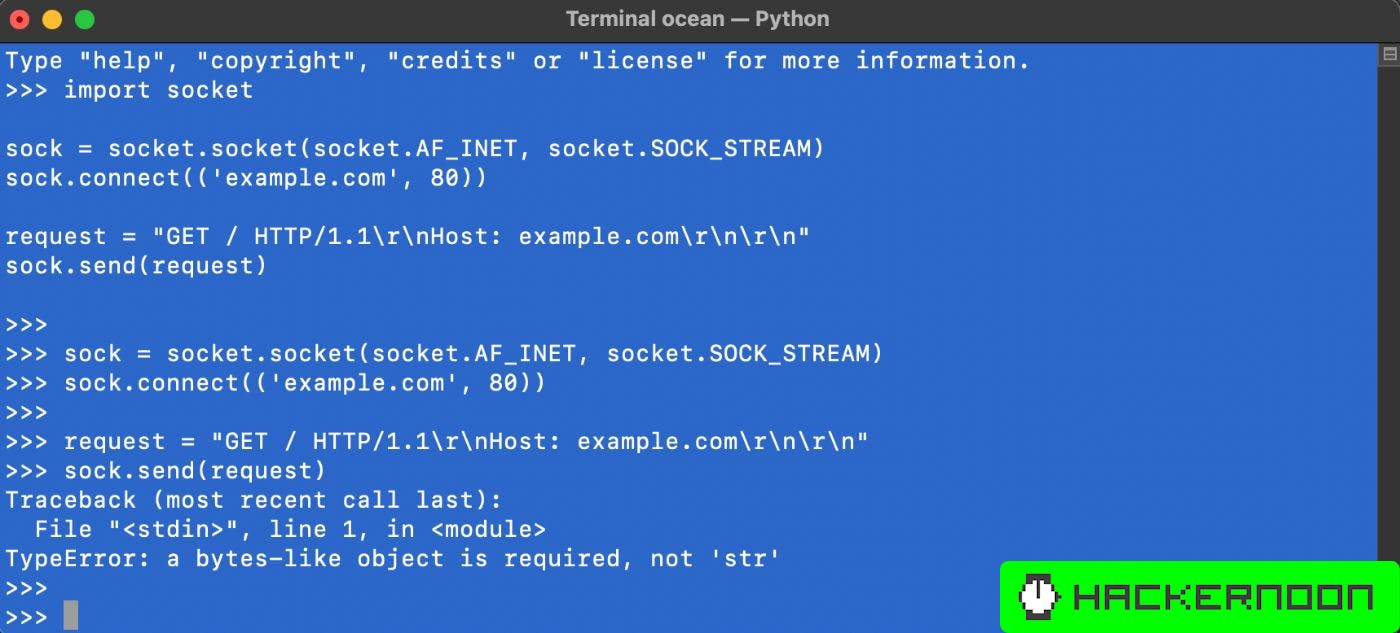

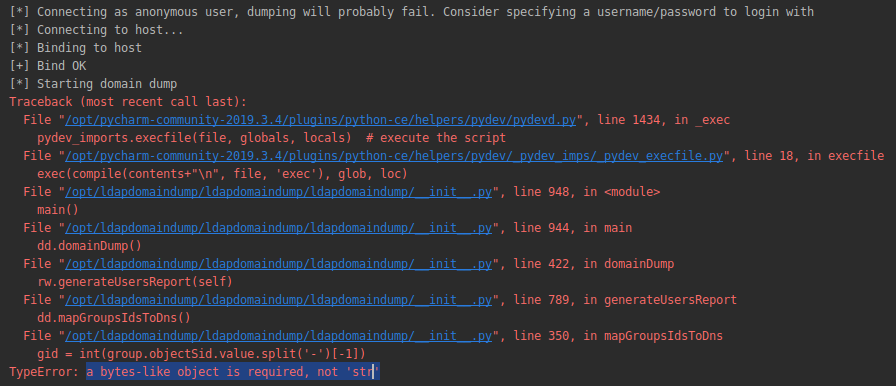
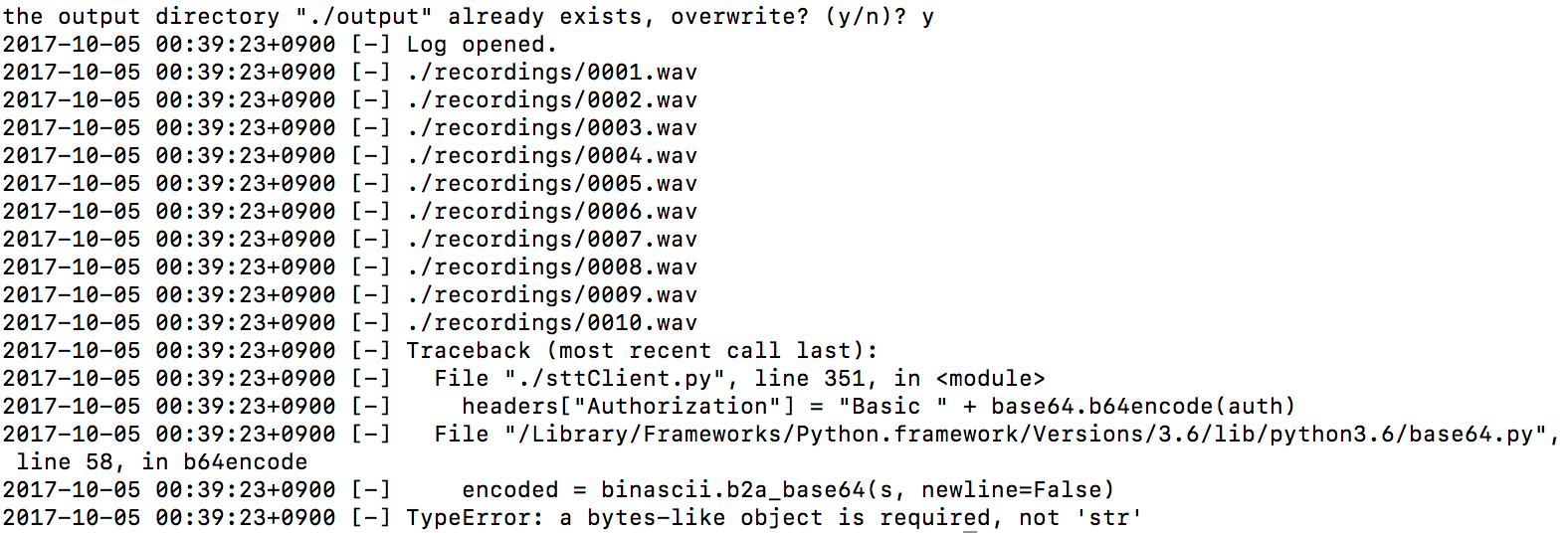

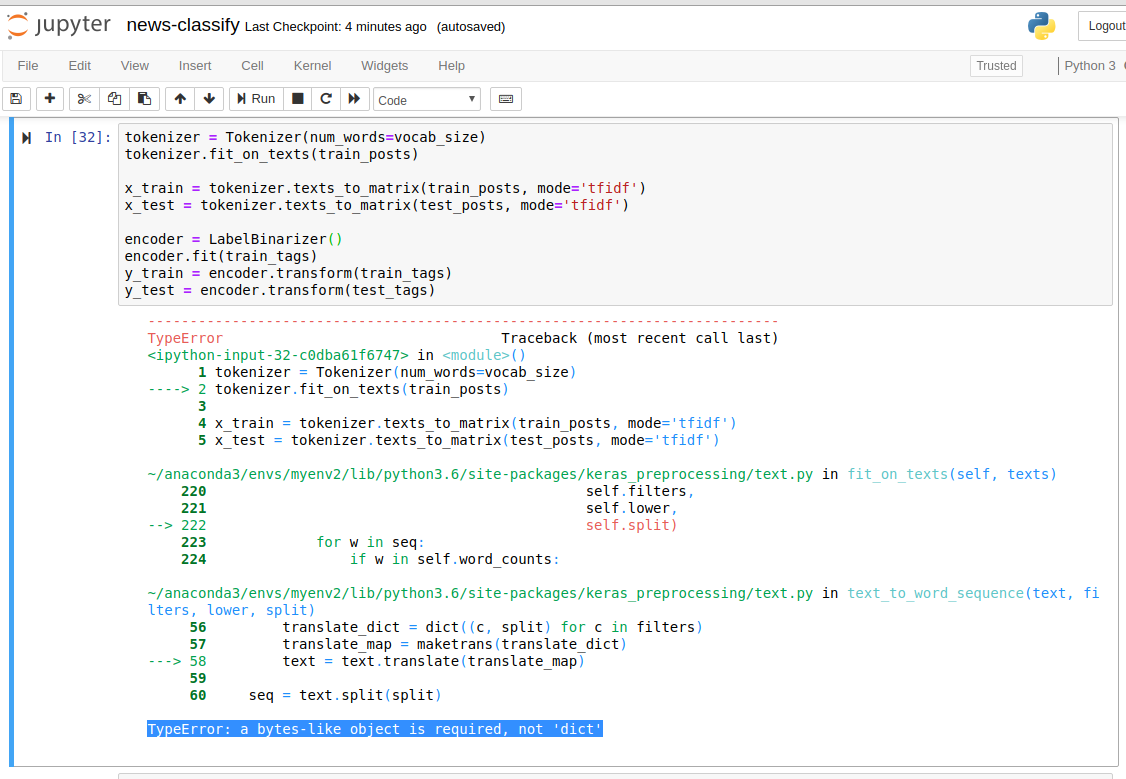



![A bytes like object is required not str [SOLVED] A Bytes Like Object Is Required Not Str [Solved]](https://itsourcecode.com/wp-content/uploads/2023/04/Typeerror-a-bytes-like-object-is-required-not-str-1.png)






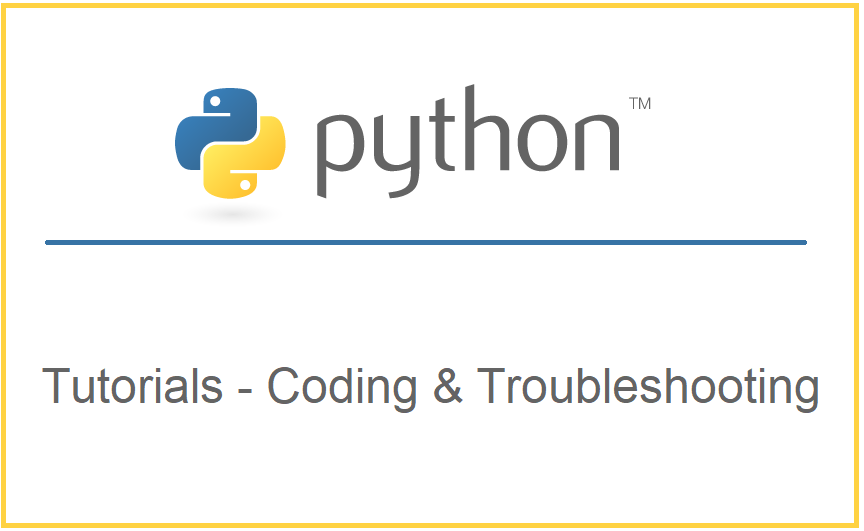







![Solved] TypeError: A Bytes-Like object Is Required, not 'str' – Be on the Right Side of Change Solved] Typeerror: A Bytes-Like Object Is Required, Not 'Str' – Be On The Right Side Of Change](https://blog.finxter.com/wp-content/uploads/2021/04/image-18.png)







![Typeerror a bytes like object is required not str [SOLVED] Typeerror A Bytes Like Object Is Required Not Str [Solved]](https://itsourcecode.com/wp-content/uploads/2023/04/3.png)

![Typeerror a bytes like object is required not str [SOLVED] Typeerror A Bytes Like Object Is Required Not Str [Solved]](https://itsourcecode.com/wp-content/uploads/2023/04/3-1.png)




![Typeerror a bytes like object is required not str [SOLVED] Typeerror A Bytes Like Object Is Required Not Str [Solved]](https://itsourcecode.com/wp-content/uploads/2023/04/4.png?ezimgfmt=rs:352x204/rscb35/ngcb34/notWebP)




![Solved] TypeError: A Bytes-Like object Is Required, not 'str' – Be on the Right Side of Change Solved] Typeerror: A Bytes-Like Object Is Required, Not 'Str' – Be On The Right Side Of Change](https://dclrlzd4gl55u.cloudfront.net/2118/hero?1605640683)
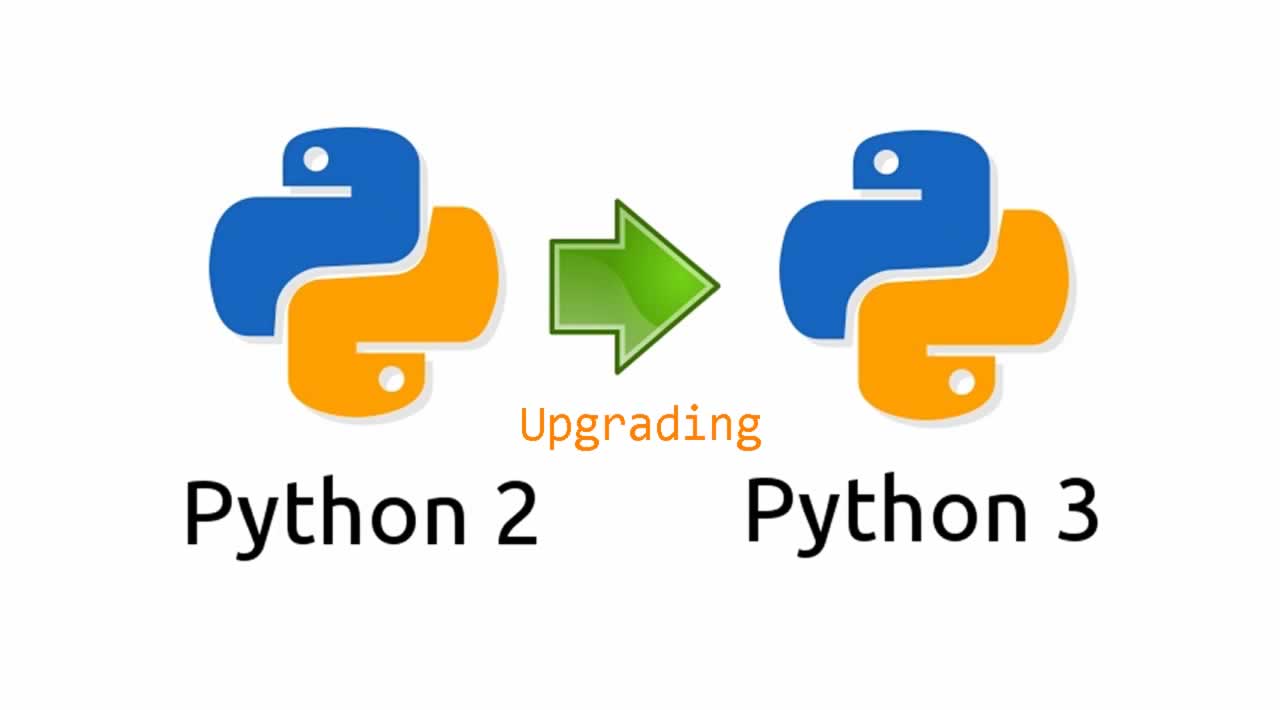
Article link: typeerror a bytes like object is required not str.
Learn more about the topic typeerror a bytes like object is required not str.
- a bytes-like object is required, not ‘str'” when handling file …
- Fix the typeerror a bytes like object is required not str in Python
- TypeError: a bytes-like object is required, not ‘str’ – bobbyhadz
- Resolving TypeError: A Bytes-like Object is Required, Not ‘str …
- Typeerror a bytes like object is required not str : How to Fix?
- TypeError: a bytes-like object is required, not ‘str’ when writing …
- How to Fix Typeerror a bytes-like object is required not ‘str’
- typeerror: a bytes-like object is required, not ‘str’ – STechies
- Fix the typeerror a bytes like object is required not str in Python
- Byte Objects vs String in Python – GeeksforGeeks
- What is a bytes-like object? – Educative.io
- Python typeerror: a bytes-like object is required, not ‘str’ Solution
- Typeerror a Bytes Like Object Is Required Not Str: Fixed
See more: nhanvietluanvan.com/luat-hoc